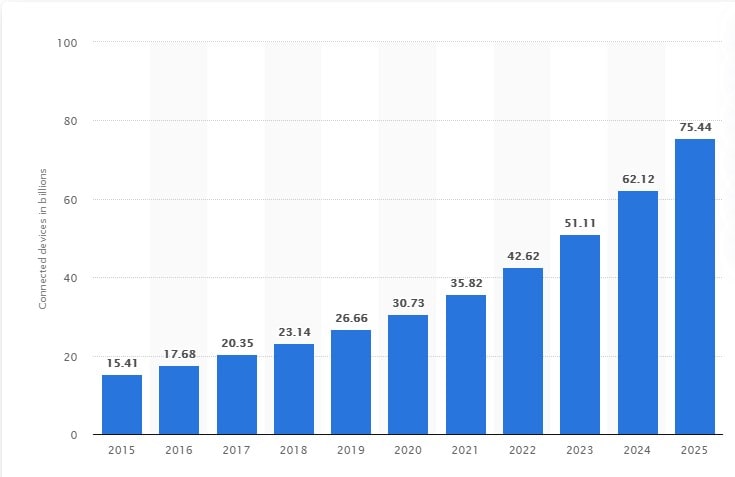
IT Strategies for Your Business: The Internet of Things (IoT)

In 1982, a modified Coke machine at Carnegie Mellon University was one of the first smart appliances. Using the college’s local ethernet “ARPNET” – a prelude to today’s internet – students could find out which drinks were in stock and whether they were cold. This is one of the earliest examples of the “Internet of Things”.
The advantages of the Internet of Things (IoT) have changed how small businesses approach the use of devices in the workplace. In today’s digital landscape, devices, machines, and objects of all sizes can automatically transfer data through a network, effectively “talking” with each other in real-time.
The Internet of Things is the idea of connecting any device that has an on/off switch to the Internet and other connected devices. In this blog, we dive more into what the IoT is and how it works, the benefits and detriments of having IoT devices in your business.
What is the Internet of Things?
The Internet of Things (IoT) refers to the large number of “things” that are connected to the internet. This includes everything from smartphones, coffee makers, washing machines, smart microwaves, and more. IoT devices also apply to components of machines, like a jet engine on an airplane or the drill of an oil rig.
IoT devices have built-in sensors that are connected to a platform like software or a website. Then the integrated data from the different devices are shared with other applications to help address certain needs. IoT devices contain sensors and processors that act on the data collected by sensors. Through a process called machine learning, these devices can learn like most humans do – by collecting data from their surroundings. This is what makes smart devices “smart”; they can learn the personal preferences of a specific user and adjust.

The Benefits of IoT
IoT machines and applications not only solve everyday business problems but also help eliminate time-consuming processes. They allow you and your team to optimize your business and be more productive.
IoT technology helps cut maintenance costs for small businesses. For example, an IoT device could indicate that a printer is low on toner, and automatically send an alert to your business’ sales rep to order more. On-the-fly troubleshooting of equipment will catch problems before they impact you or your team, saving the hassle and costs of large repairs.
Customer engagement is the top priority for most, if not all businesses. Customers expect that someone or something will interact with them. About 40% of customers do not care if a chatbot or real person helps them if they are getting what they need. With IoT devices, you can improve customer experience by giving your customers options on how to get their needs met.
IoT technology will allow for more mobility and agility. IoT allows your staff to work from almost anywhere. Office space is not always affordable, and IoT has allowed small businesses to completely overhaul how they operate by hiring more full-time remote staff.

The Detriments of IoT
With the advancement in technology and social media, personal data is easily available on the internet. With so many devices and accounts connected, hackers have a wide range of tools to break into a network and steal information. In your business, privacy could become an issue. The information staff has access to, and the methods they share with others could be misused by hackers, or even other companies, to exploit them.
It is no question that IoT is dependent on an internet connection. It is completely useless without it. However, because access to the internet has become so available, it has made some businesses over-reliant on technology. Computers have no fault-free system. Your business will likely experience some technical difficulties. The more trust and focus are placed on the Internet, if lost, can be disastrous for a team with no backup plan.
Although IoT can help speed up productivity and cut costs, there is a lot of complex operation behind it. In the event the software makes a wrong calculation, or a script fails, there may not be an easy fix for that. Access to new machines and systems could present your staff with unknown challenges. Your IT team may not have a workaround available to get your systems up and running if they are down.

Wrapping Up
By 2025, analysts have predicted that there will be more than 75 billion IoT devices in use. Businesses can use IoT for improved efficiency and productivity. Small businesses will also benefit by improving customer experience by offering several options for support, and by tracking customer behavior. However, you must keep in mind the decrease in privacy as more and more devices are connected.

While it is great that these many technological advances are out there, you should ensure that your team isn’t overly reliant on these devices to do their jobs. At the very least, your team should be trained on how to operate without these tools just in case there is an issue. Lastly, your team should do thorough research on all the IoT devices they use; there could be potential issues they may be unprepared for.





Comments are closed.